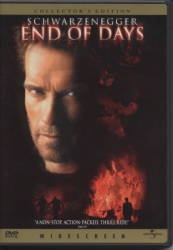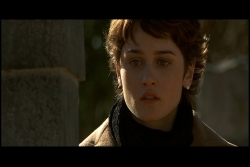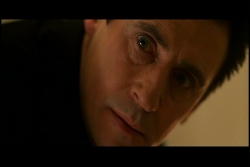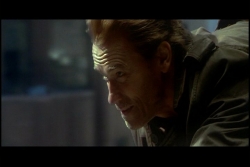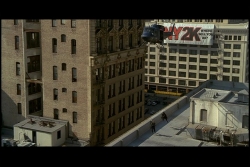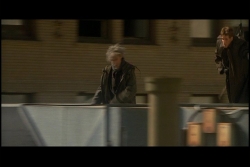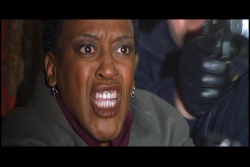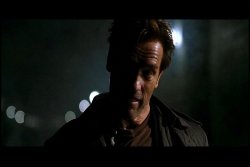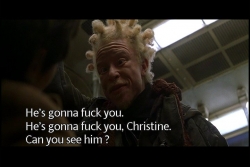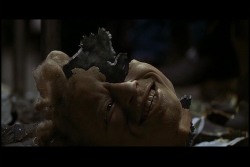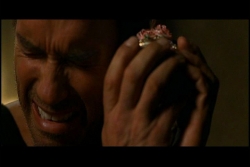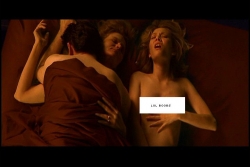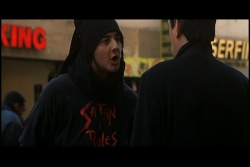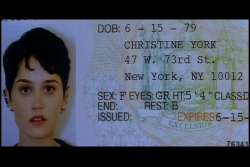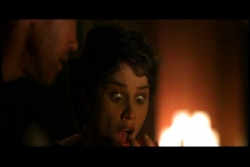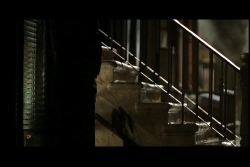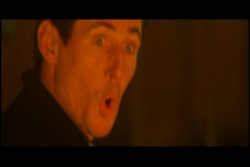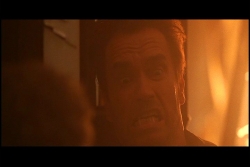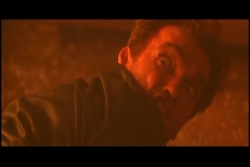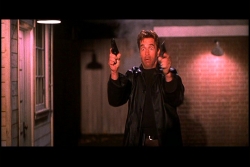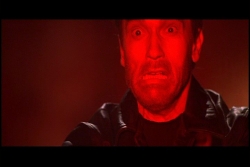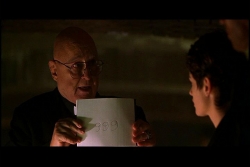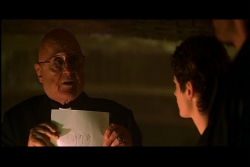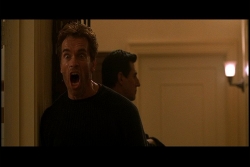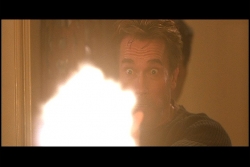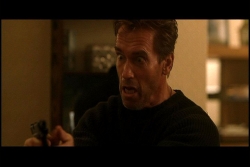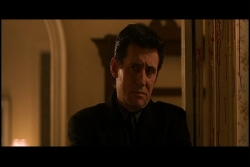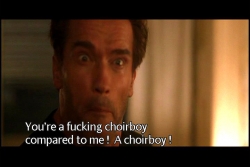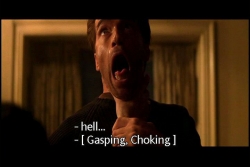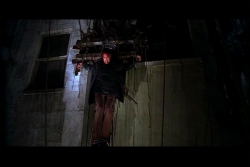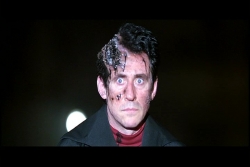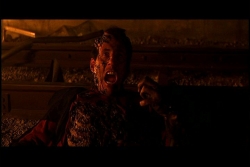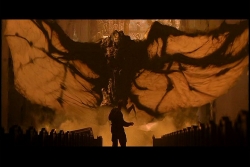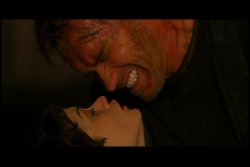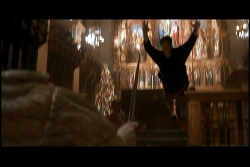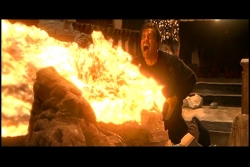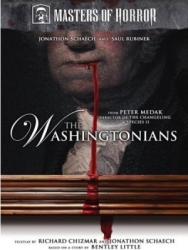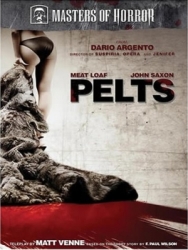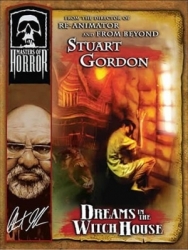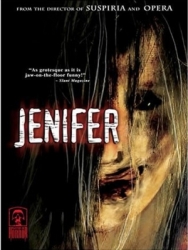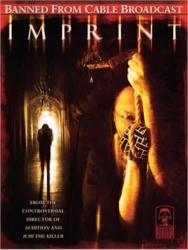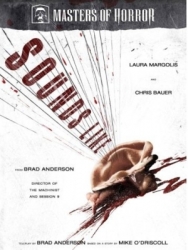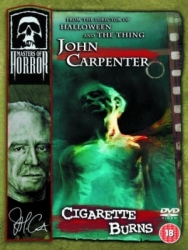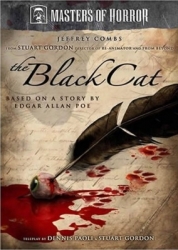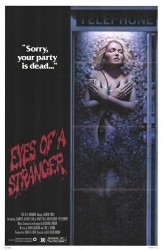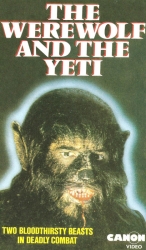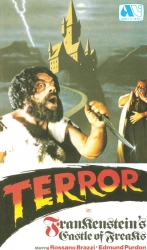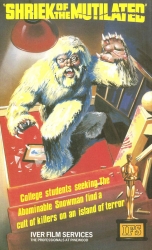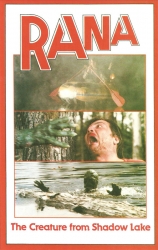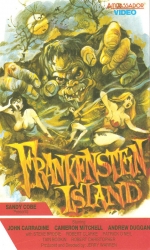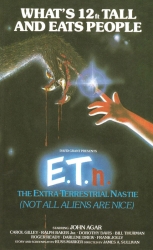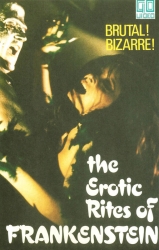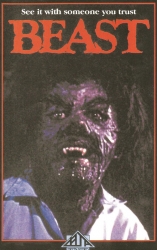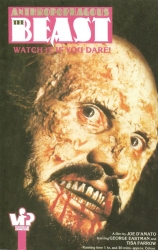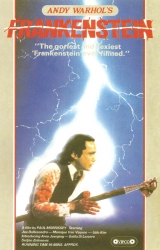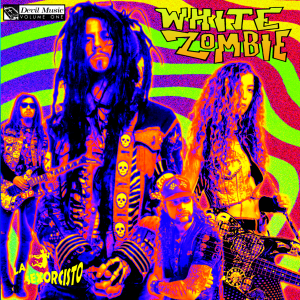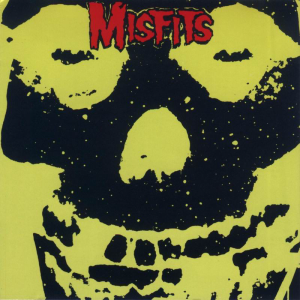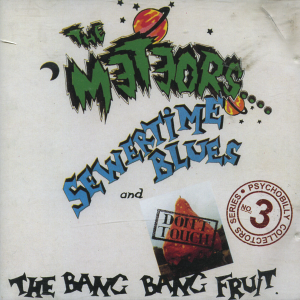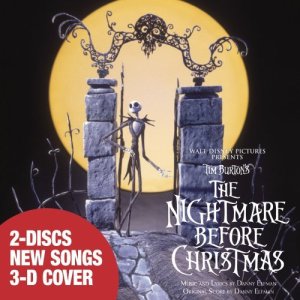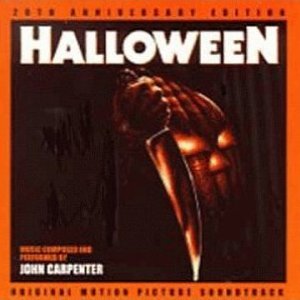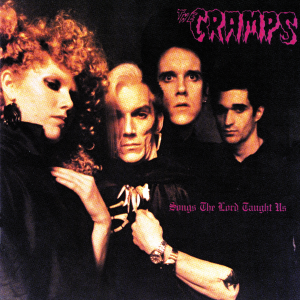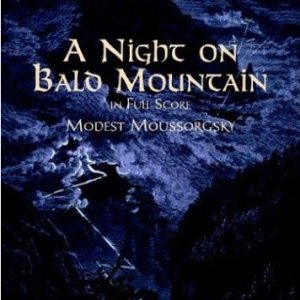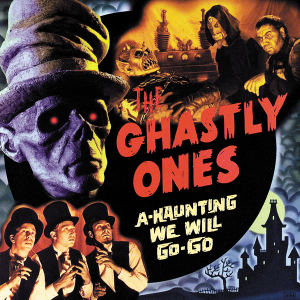everyone has a film that they use as the yardstick by which other horrible films are measured. like many, i often use uwe boll’s films in this capacity… but uwe boll bashing is becoming passé and, truth be told — his films actually seem to take pride in their flaws. therefore, most of the time i use a different example when saying things like, “yeah it was bad — but it wasn’t [insert worst movie ever made here] bad.” for quite a few years now that movie has been the cinematic ovarian cyst known as end of days.
true, you can probably find thousands of ultra low-budget films that objectively are far more worse than end of days. but something must be said for a film that not only fails, but fails spectacularly. the case could be made that many films would not have been so horrible had the production had a little more money or a little more time. end of days, on the other hand, had all the money in world, the abilities of some very talented actors and a crew of hundreds of people, any one of which could have put a stop to this horror simply by saying “hey, you know what? this kinda sucks.” they didn’t though, so we are left with the monstrosity…
Set at the turn of the millennium, End of Days tells the story of Jericho Cane, a man who finds himself pulled into a web of supernatural intrigue when he discovers that the fate of mankind rests with the safety of a woman who is pursued by the ultimate evil. Confronted by a villain who he cannot defeat with conventional methods, Jericho desperately searches for a way to prevail, but to do so he must regain faith in himself and overcome the tragic loss of his own family.
at least that’s how one reviewer summed it up. another, equally valid, way is this: “a film whose existence can only be explained by positing that the first draft of the script must have been a smallish yellow post-it note with a largish smudge of unidentifiable animal feces on it.”
so let us delve into the intricacies of this little film, shall we?
the first thing one notices is that this film is dark. i don’t mean se7en dark, like in terms of “mood.” i’m talking doom3 dark without the flashlight mod kind of dark. this is what happens when you let the director be his own dp… (pun alert) in light of this, i’ve taken the liberty of brightening up the screenshots so you can actually make out what’s going on.
not being particularly religious, i shouldn’t really care… but i’ll also point out that this film is about the apocalypse… there’s tons of new testament references, crucifixes and a whole “christianity will win the day” vibe going on here. And it’s directed by a jew. sidenote: sam raimi was offered this gig, but passed, thereby further justifying my respect. anyway, let’s get started…
the film opens with a bunch of priests in the vatican saying that (against all probability) a baby is being born somewhere on the planet. and then they get into an argument about whether they should kill it or not. in typical pope fashion, the pope decides they definitely should not kill the baby. in the event that they could find it. which they can’t.
then we’re wisked off to the world’s darkest delivery room. a baby is born and a creepy fat nurse takes the baby down the world’s darkest hospital hallway, into the world’s darkest elevator and then into the world’s darkest basement. here the always-creepy udo kier (even when eating doughnuts) feeds the baby some snake’s blood and sends it back to its momma. cut to 20 years later.
now the baby’s grown up into that girl who shaved off all her hair in empire records… then wore a big blonde wig in the craft.
ok, a big ‘ol flame comes shooting out of some manhole covers and an invisible demon thingy comes flying out too (predator type invisible… not hollow man type). so… what does a big semi-invisible demon thing do its first day in new york city? get some pizza or see a show? no, it goes straight to the men’s room. there it finds gabriel byrne, tosses him around a bit and jumps in his belly. fully linda blair-ed now, gabriel walks out, kisses some woman, gives her husband the stink-eye (see above), and walks out of the restaurant just as it explodes, incinerating the bathroom, the woman, and the husband but not the stink-eye as gabriel escapes unscathed.
so far this isn’t making a whole lot of sense, but at least we’ve seen some talented actors. maybe this movie won’t be so bad…
oh, for god’s sakes. it’s arnold schwarzenegger. hanging from a helicopter.
this doesn’t bode well.
turns out arnold’s a down-on-his-luck body guard. he seems to like playing russian roulette, drinking and putting pizza in blenders. think of the first scene with mel gibson in lethal weapon and you know what they were trying to convey here. yep… he’s an ex-cop whose family was killed and now all he has left is a death wish, some bitterness towards god, a few slices of left-over pizza and kevin pollak.
ok, someone took a shot at gabriel byrne and now arnold has to chase the sniper around on a helicopter, hanging from a string. oh, notice that y2k sign in the background. they’re everywhere. every external shot, every park bench, every subway car, every piece of paper fluttering on the ground has this logo on it. just in case the “december 31st, 1999” that keeps popping up at the bottom of the screen doesn’t clue you into the whole millenium theme.
woh, who’s that guy on the right? it’s certainly not arnold.
anyway… arnold and his poorly disguised stunt double save the shooter from falling off the roof, chase him into a train tunnel, and then negate that ‘saving him from falling off the roof’ thing by shooting him. then the real cops show up and there’s lots of –
arnold looking like this and —
the cop lady looking like this and —
then arnold yells at them a bit and they go away with the shooter guy. oh yeah — the shooter guy was yelling about how the “1000 days are over” and other nonsense you already heard in chris carter’s millennium. the cops discover the guy is a priest and has no tongue… and arnold seems a little mystified at this. the movie takes the bold move of never even attempting an explanation of how arnold could hear a guy with no tongue speak perfect english. i love this movie.
in the priest’s apartment they (first arnold and later, the cops) discover a picture of the chick from empire records and decide to focus the rest of their investigation on this small fact for no logical reason.
ok, then we’re back with the chick mentioned above, who gets approached by this creepy little albino fellow. he spouts wonderful dialog like the above and then —
falls over and shatters. like all albinos. then the girl wakes up, we realize it was just a dream and we can get back to arnold. oh, and we find out that arnold’s character’s full name is jericho cane. why not just drop all subtlety and name him holy mcjesus?
as it turns out, jericho isn’t having such a good day. he breaks out his daughter’s music box and starts crying. crying. arnold schwarzenegger is crying. let me try to convey how well this turns out on the silver screen…
imagine a chicken in a barnyard. imagine a farmer cutting this chicken’s head off. now imagine this chicken’s body running full tilt at a wall attempting to perform the scene where lady macbeth attempts to wash invisible bloodstains off her hands. the similarities are so close between this imaginary event and arnold attempting to convey grief that it borders on no longer being a metaphor.
then gabriel byrne (aka SATAN) meets up with udo and his family. he has a little fantasy doohickey where he sexes up udo’s wife and daughter (i’m starting to see why gabriel decided to be in this movie) and starts his search for the chick from empire records. it turns out that satan has got to get freaky with that girl between 11pm and midnite on new year’s eve (eastern standard time, i’m assuming) to sire his demon spawn. which will lead to the end of days. it doesn’t sound too bad, except I question any world domination plan that revolves around busting a nut.
ok, then satan runs into this goofball with the “satan rules” t-shirt. satan likes the shirt so, of course, he makes the kid run into a bus.
meanwhile, arnold is checking in on that priest he shot earlier who is now dead. carved into the guy’s chest is a bunch of crap in latin plus the phrase “christ in new york.” in the most ludicrious leap of detective logic i have ever been privy to, arnold decides “maybe that means something else. we’re looking for a girl… maybe it’s her name. do a search for chris york… or christine york.”
bingo! there’s a christine york! batman and sherlock holmes rolling around in baby oil couldn’t have figured that one out, but damn if arnold didn’t crack the case.
arnold catches up with christine. she’s obviously ticked off that arnold has thus far gotten to make all the funny faces in the movie, so she makes one of her own. she does this because…
her apple has little people growing in it! oh, satan! you cad!
now comes my favorite scene of the entire movie. satan shows up, but decides he needs to take out arnold’s partner (kevin pollak) first. why this is necessary, i don’t know. kevin is just sitting in a van across the street, not really paying attention to much of anything. he’s hardly a big threat to SATAN HIMSELF. regardless, satan decides the best way to rid himself of the ‘pollak situation’ is through… urine.
urine.
across the street from the van, satan pees all over the sidewalk. the unholy yellowness creeps across the ground, flowing under kevin’s van. satan then drops his cigarette into his own mess and…
it catches fire!
the flame flows towards the van, the van explodes, a police car blows up, and multiple buildings catch on fire. then satan makes this face in a 6 frame shot quickly cut into the previous barrage of explosions.
what is it with gabriel byrne and urinating? earlier in the movie, his introduction took place while using the restroom… and in the usual suspects his first scene begins… how? with kaiser soze pissing on some flames to put them out while gabriel watches. soze is referred to as “the devil himself”… yet his urine extinguishes fire. here it’s explosive. it’s all a bit confusing… is demon urine flammable or a flame-retardant? such are the deep theological questions that end of days forces you to confront.
in any case, this little bit of cinema made such an impression on me that i had to make a slow-motion animated gif out of it.
without further ado, i give you — gabriel byrne’s interpretation of how satan might look if his urine was used as a weapon.

not to be outdone by gabriel, arnold ups the ante further with faces like —
this and —
this.
that out of the way, he grabs the girl and skedaddles.
they run into the cops (who now appear to be moonlighting for satan) and arnold kills them all with guns he pulls from his sleeves all while making more silly faces.
sometimes in red.
they seek refuge in a church where apparently “satan cannot see.” then Father Exposition shows up and gives them the skinny. the number of the beast is not 666. you see, numbers in dreams are often upside down and backwards. the number is really 999. as in 1999. as in right now. as in we’re fucked.
every thousand years satan gets one chance to rape someone and take over the planet. that time is now, and it’s christine’s biblically pre-ordained uterus he needs.
we cut to a reaction shot from arnold and christine… and when we cut back the priest is holding an entirely different piece of paper with completely different handwriting. it’s like magic! but with less continuity.
so christine decides the priest and his magic paper are just too cool for school and she’s going to hang with them. arnold (he of little faith) thinks that’s a dumb idea. much like keith david in the thing, arnold ain’t buying this voodoo bullshit. he sums it up beautifully by telling the priest,
“between your faith and my glock nine millimeter, i’ll take the glock.”
so, arnold heads home. there he runs into satan who wants to know where his mystical sex toy is hiding. he tries bribing arnold by offering to give him his family back, but arnie ain’t dumb. He tries to scare satan off by looking —
like this and doing a —
little of this and —
finally by screaming at his own gun.
satan is not amused, and begins to pout.
now, try to imagine being gabriel byrne in this scene. you are a very talented actor, but to pull off a convincing performance as one of the classical figures of mythology, lucifer the morningstar himself, you need the actor opposite you to “give.” it’s a positive feedback loop… you bounce your acting off of each other until you both achieve something you couldn’t have done alone.
in this case, from gabriel’s perspective, i would imagine it’s a lot like playing handball against the drapes.
anyway, arnold tries to play tough-guy and calls satan a choir boy. satan’s reaction is —
predictable.
i haven’t seen dialogue like this since mamet’s early works…
satan: just tell me what you want.
jericho: i’ll tell you what I want. i want you to go to hell.
satan: well, you see, the problem is… sometimes hell comes to YOU!
then there’s some fighting and some yelling and some general unhappiness. next thing you know, old satan’s got the girl in his limousine and arnold is being crucified.
that’s really an image i could have lived forever without contemplating. it’s so ludicrious, it immediately made me think of that painting of christopher walken building robots…
as the movie continues, satan pulls a typical 007-type villain move and doesn’t actually kill arnold… and Father Exposition gets him down off the cross. arnold breaks in on satan’s make-out session and blows the crap out of everything with a rocket launcher. he grabs the girl and they high-tail it for the subway. satan decides to —
give one last goofy face before getting hit by a train.
he gets all busted up and so has to leave gabriel byrne’s body, leaving predator-satan to chase arnold and the girl to another church where the climatic final battle will occur.
admittedly — that’s kinda cool looking.
satan kicks arnold around a bit and then jumps in his belly. with only about 3 minutes before midnite, satan really hopes that arnold doesn’t have a lot of sexual stamina.
here you can see the subtle way that schwarzenegger coveys inner conflict and christine is obviously wondering why she didn’t sleep with satan back when he looked like gabriel byrne.
in order to avoid some really awkward post-coitus pillow talk, arnold looks at the statue of christ and (using his thus-far well-documented religious faith) pushes satan back… and throws himself at the nearest pointy object. hey, what’s a giant sword doing in a church anyway? i dunno, but they established it in a shot about 15 seconds earlier, so i guess it’s makes sense.
“yes, that went entirely according to plan.”
finally, arnold shoots fire out of his abs as satan leaps out of his body and returns to hell. arnold looks around, suddenly realizing that maybe if he hadn’t thrown himself on a sword and just waited 4 or 5 seconds for midnite to come around, he might not be in such agonizing pain at the moment.
god or jesus or something lets him see his wife and kid for a second before he drops dead. christine, in proper gracious fashion, touches his cold dead hand. and then i imagine she gets the hell out of there and goes back to her boring life of almost constantly not having sex with satan.
this final scene is the first time arnold, playing a human character, ever died in one his movies. apparently the original ending had jesus heal his wounds and he and christine walked off together (i am not making this up), but while watching this, the test screening audiences began throwing up in their mouths. a lot. so they changed it.
and thus ends peter hyams moralistic masterpiece. despite having no real religious affiliation, i can’t help but find the idea of arnold schwarzenegger as the last bastion of hope in the face of the unholy a bit blasphemous. none of the other characters (even the pope himself) could stand up to satan. and yet arnold is the one shining example of human morality and undeniable faith? that alone is almost enough to justify saying end of days is the worst film ever made. and if it’s not… well, i just have two words for you. exploding. urine.








